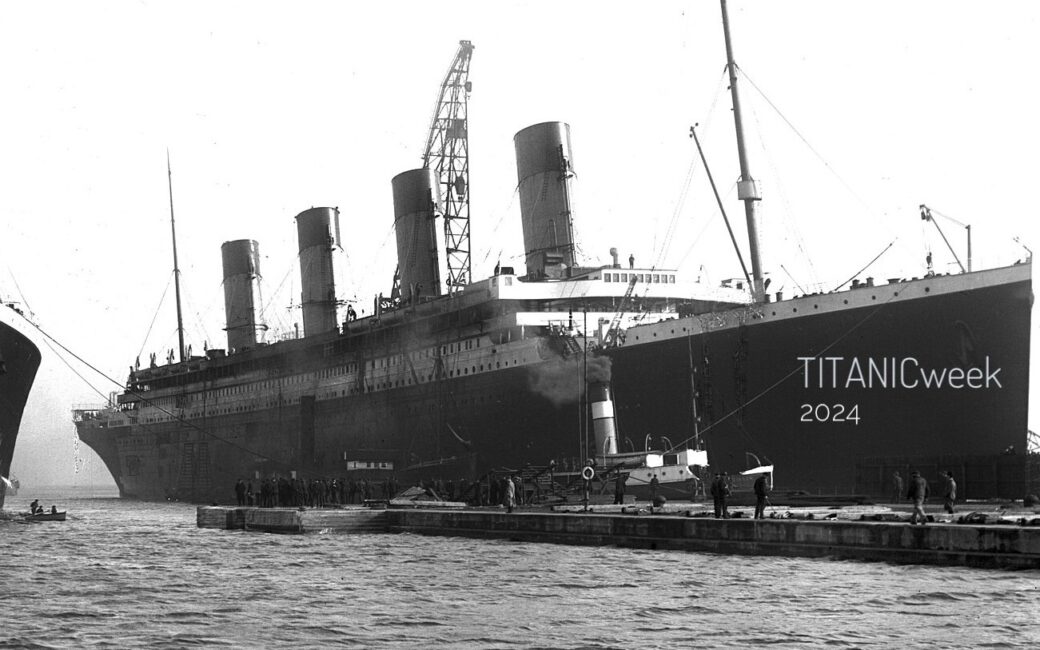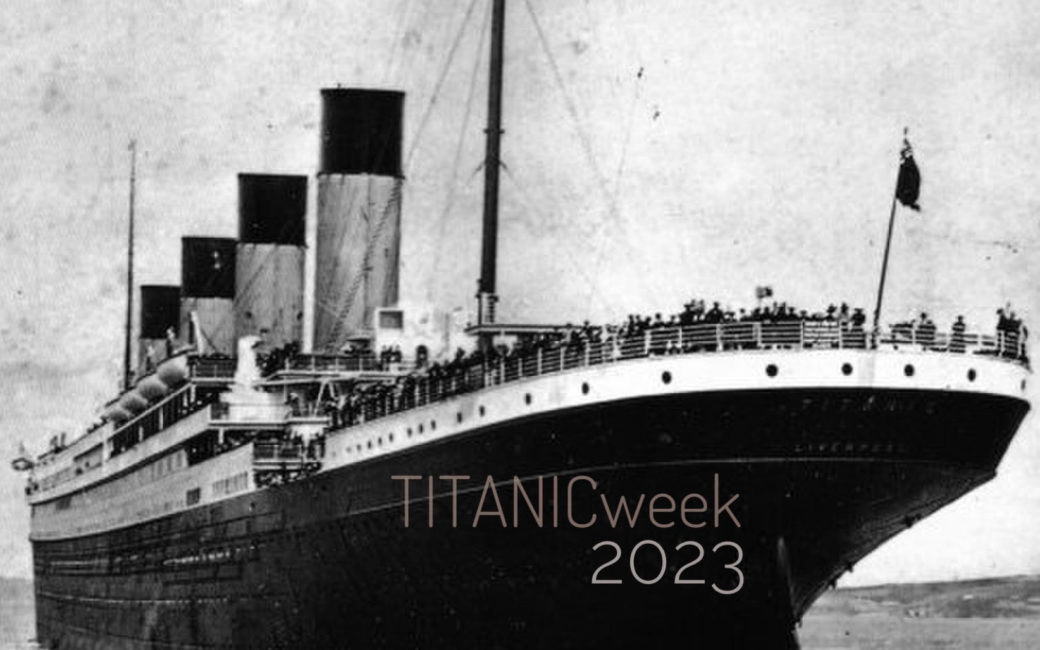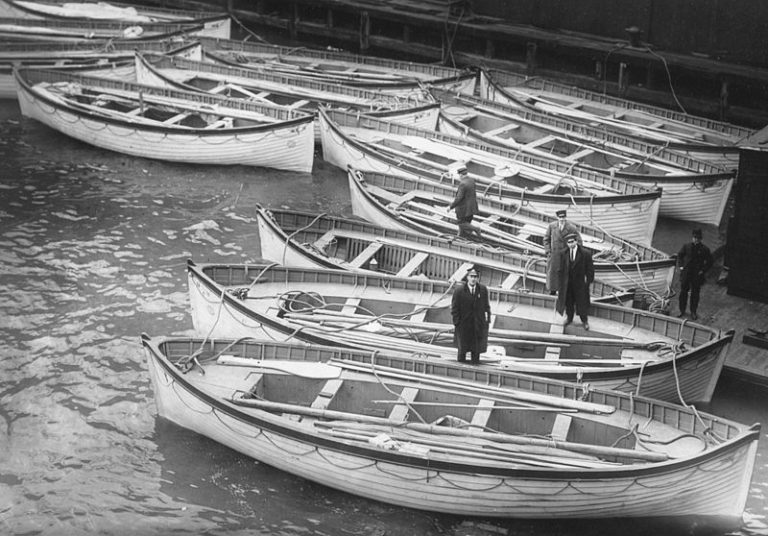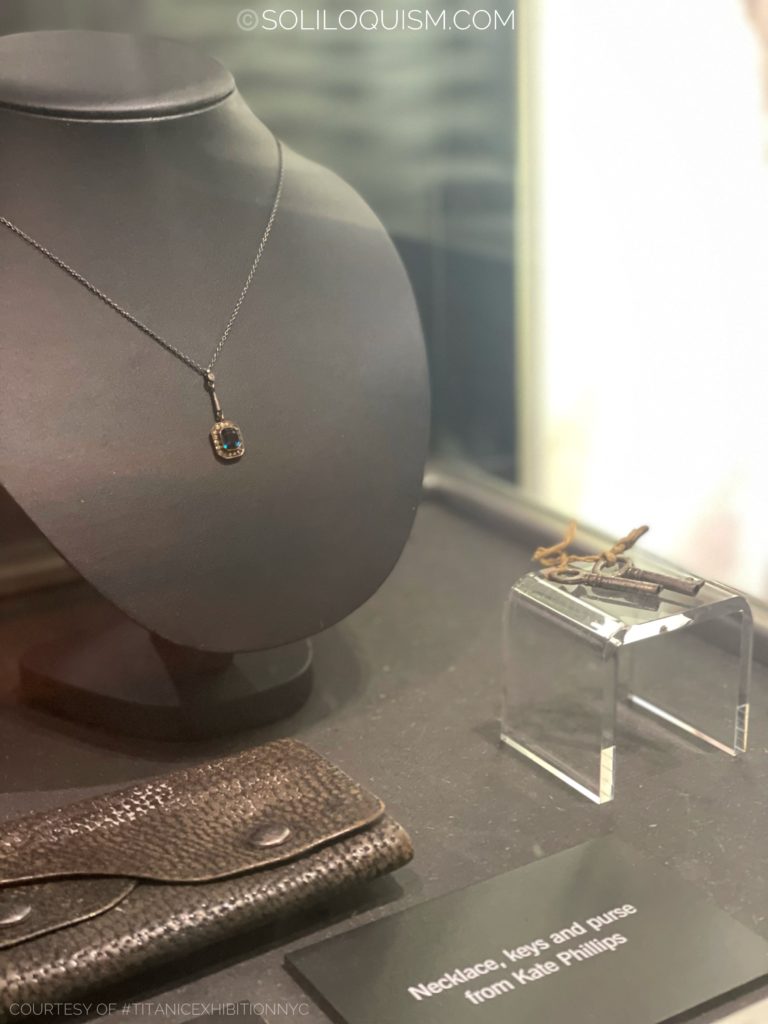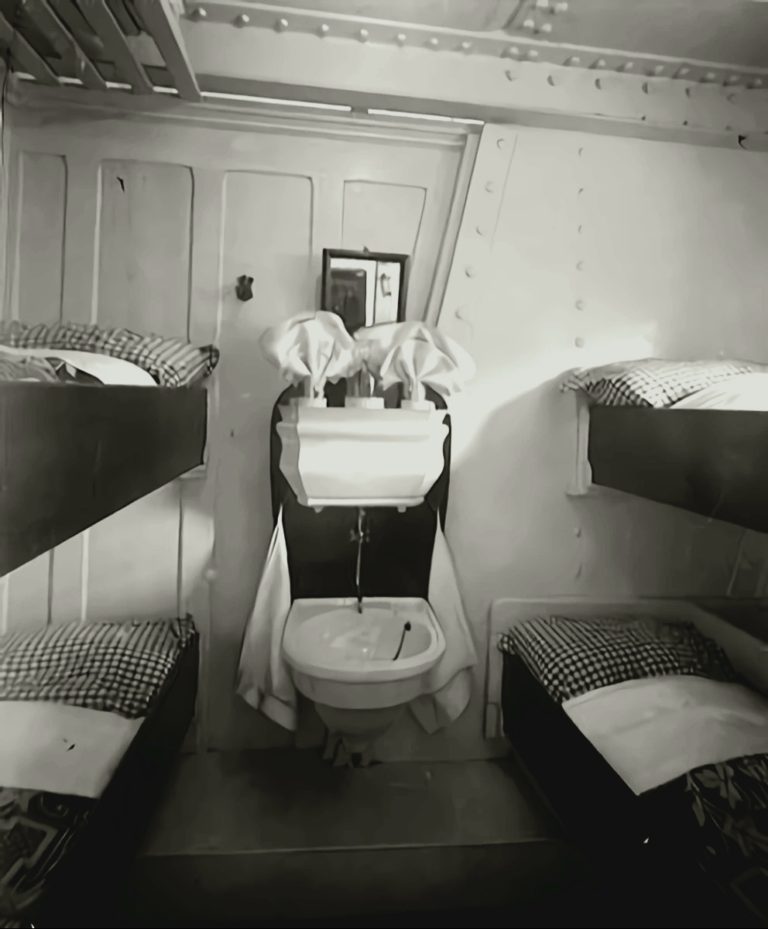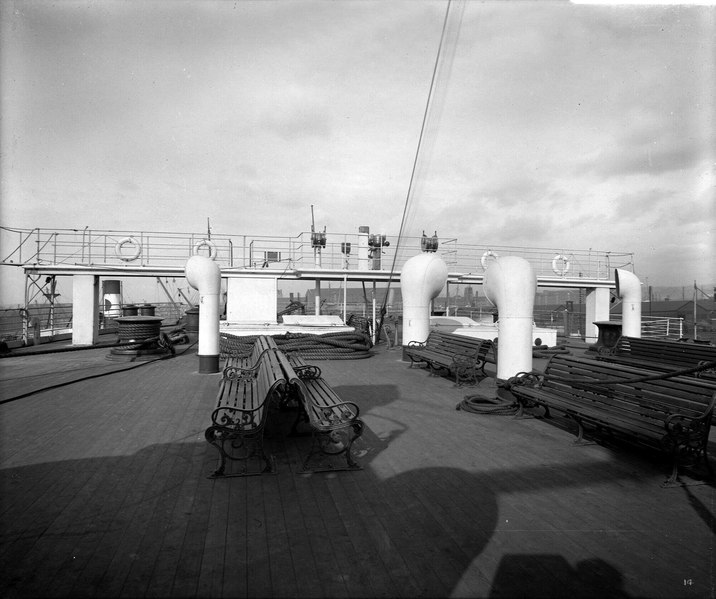"A Ship Full of Flowers": Sensory Titanic
When passengers embarked on the RMS Titanic on April 10, 1912, in Southampton, they legitimately could smell the fresh paint.
And by many accounts, it was pretty awful.
Much like anywhere else—and despite the impressions of austerity invariably imparted by black-and-white photographs—Titanic was a world of scents. Some were pleasant, most were reportedly overpowering.
And all collaborated in a perfume at once chemical, decadent, and grim.

Titanic docked in Southampton on April 10, 1912.
PUBLIC DOMAIN
According to multiple firsthand accounts, Titanic reeked of fresh paint and varnish.
The exterior was painted, of course, with the iconic red portion of the hull protected with a so-called anti-fouling medium made by Suter, Hartman & Rahtjens.
But the rooms and corridors, newly painted a pristine and untouched swan feather white, are what inspired passenger complaints.
Lillian Asplund, a steerage passenger who was six years old when she boarded Titanic, later recalled, "I remember not liking the smell of fresh paint."
Meanwhile, Second-class passenger Kate Buss wrote in a letter home, "The only thing I object to is new paint so far."
Third-class passenger Jane von Tongerloo was so displeased with the smell, recalled her daughter, that she left the cabin door ajar just to get a modicum of fresh air.
The combination of oil-based paint and linseed oil was a heady aroma under the best of circumstances, but could prove particularly difficult to overcome, when ventilation was primarily achieved via portholes. Opening these, of course, subjected the room to the fickle April chill.
The smell of paint even sickened some passengers, causing symptoms such as head pain.
The White Star Line reportedly made attempts to mask the chemical odors with an absolute excess of floral arrangements.
White Star flooded both suites and various public spaces with bouquets--to such a degree that one passenger later described Titanic as "a ship full of flowers."
The plentitude of flowers on board Titanic were all provided by a single nursery: F.G. Bealing & Son of Southampton.
The horticultural florist firm had begun supplying the White Star Line when the company arrived on the scene in Southampton in 1907. It was a connection achieved via Bealings's existing relationship with Oakley & Watling, one of the White Star Line's regular fruit suppliers.
In the evening hours of April 9th, Mr. Frank Bealing, his son, and his foreman Bill Geapin loaded all the flowers, palms, and potted plants into mule-drawn carts, and pulled up alongside the mammoth liner in its quay.
The men set down all the flowers on a tarp in one of Titanic's main foyers, and set to work distributing them about the ship.
Decorative plants were staged partly at the direction of White Star staff and partly per the Bealings's tastes, although they likely would have attempted to mimic the placements they'd done on Titanic's elder sister Olympic.
Fresh-cut flowers, meanehile, were stored in the Titanic's G-Deck storage room labeled "Passenger Fruits & Flowers."
It is also rumored that Bealing buttonhole carnations were handed out to the First-Class passengers on sailing day, and many likely found their ways down into the water below. A local boy who went to see Titanic off recalled that "all the people on deck were waving and throwing flowers down, and they were all going into the sea."
There are varying reports of the substance of floral bouquets upon First-Class dining tables for each meal.
Perhaps each table was alternately arranged with a unique bouquet, suggesting a theme; perhaps the variations in their retellings are simply mistakes of memory.
Lady Duff-Gordon wrote of her dinner table in the A La Carte restaurant on April 14th, "We had a big vase of beautiful daffodils on the table, which were fresh as though they had just been picked."
Meanwhile, Mahala Douglas recalled that while attending the dinner party for Captain Smith on the at very same evening that those tables were adorned with bouquets of pink roses and white daisies.
And Lily May Futrelle recalled with a flourish that her dinner table boasted a "great bunch" of American Beauty roses.
In addition to all the flowers already on board, a number of passengers received “Bon Voyage” flower baskets from acquaintances—among them, First-Class passenger Ida Straus.
"You cannot imagine how pleased I was to find your exquisite basket of flowers in our sitting room on the steamer. The roses and carnations are all so beautiful in color and so fresh as though they had just been cut."
Citation courtesy of "On Board RMS Titanic," by George Behe. 2012.
Lady Duff-Gordon also boarded with a basketful of flowers: lilies of the valley--her signature bloom--gifted to her on the train platform in Paris as she departed for the port of Cherbourg, by the salon girls in her employ.
Floral arrangements within First-Class suites and cabins reportedly consisted of carnations, and were changed daily.
This routine apparently included a rotation of flower vases in the bathrooms, as Lady Duff-Gordon recounted in her survivor account.
"Just then, a steward knocked. 'Sorry to alarm you, madame, but Captain's orders are that all passengers must put on lifebelts.'
Before we followed him out of the cabin, as I looked round it for the last time, a vase of flowers on the washstand slid off and fell with a crash to the floor."
It should be noted, however, that botanical fumes in First-Class cabins were not exclusively due to zealous floral placement.
They also emanated from bath products supplied by the White Star Line.
Titanic, much like any hotel, also provided complimentary toiletries to its guests.
In particular, White Star provided “Vinolia Otto Toilet Soap” exclusively to its esteemed First-Class clientele on all of its vessels.
The soap was produced by the Vinolia Company Limited, an English company that existed as early as 1894.
Vinolia Otto was advertised as the “standard of Toilet Luxury and comfort at sea… perfect for sensitive skins and delicate complexions… and for regular Toilet use there is no soap more delightful.”
Vinolia likewise claimed its product was “just the soap to counteract the effect of the salt sea upon the skin.”
It reportedly had strong scents of roses and lemon, leading to reasonable assumption that the soap was named after its source botanical component: rose oil, which is more elegantly referred to as “an attar of roses” or “Rose Otto”.
Speaking of roses: perfumes were of course in use in 1912, and likely would have also contributed to Titanic's olfactory atmosphere.
And although determining which branded perfumes may have been on board Titanic is speculative at best, enthusiasts have made some informed guesswork based upon the popularity of various perfumes in the spring of 1912.
Two such perfumes were by Jacques Guerlain: called Jicky, and L’Heure Bleu.
The former was made up of vanilla and lavender with a secondary citrus essence, while the latter left a powdery, dusky impression due to spicy aniseed and violet notes. A stroll across Titanic's decks may very well have been visited by one of these scents woven into the cool salt air.
It is likely that same walk down the promenade would also have been accompanied by the rich aroma of tobacco.
Cigarettes, cigars, and pipes were welcomed throughout the vessel, save for a few areas, such as the First-Class Dining Saloon during mealtimes and the corridors.
Smoking was likewise forbidden in the Palm Court on A Deck, a point of contention that turned the room into a de facto playground on Titanic’s sister Olympic.
But smoking was otherwise permissible in most locations. It was so ubiquitous, in fact, that during a review of the Olympic, White Star chairman J. Bruce Ismay advocated for additional cigar-holders to be installed above the urinals in the men's lavatories.
Additionally, the Cafe Parisien on B Deck seemed particularly popular for fashionable young cigarette smokers on board the Titanic.
Crew members were only permitted to smoke while off-duty, although surely this rule was bent to breaking.
Stewardess Violet Jessop wrote in her memoir that she caught at least one steward defying the rule on the boat deck, in the middle of evacuations.
"A steward stood waiting with his back to the bulkhead, cigarette in mouth and hands in his pockets. It struck me forcibly as the first time I had ever seen a steward stand thus amid a group of distinguished guests."
Excerpt from "Titanic Survivor: The New Discovered Memoirs of Violet Jessop," written by Violet Jessop and edited by John Maxtone-Graham. 1997.
Officers were assigned their own Smoking Room, and it is reasonable to assume it was frequented.
Fifth Officer Harold Lowe was photographed with a pipe on multiple occasions throughout his career, as was Second Officer Charles Lightoller. First Officer William Murdoch was reportedly a smoker as well.
Cigars, meanwhile, were the proud enjoyment of many an elite gentleman on board, including Captain E.J. Smith. Smith's daughter once recounted that her father was so precious with his cigars that he would insist that other people in the room stay utterly still, so as not to disturb the blue-smoke haze.

Captain Edward James (E.J.) Smith.
PUBLIC DOMAIN
On to a less pleasant smell than all the others: the iceberg that sank Titanic. Multiple survivors attested to the rank odor of nearby icebergs on the night of April 14th.
Crewmember Frank Winnold Prentice stated, "You could smell ice; I knew it, because you can smell it… keenness, a keenness in the air. There’s something about ice you can smell," in a filmed interview in 1983.
In his testimony before the British Wreck Commissioner's Inquiry, lookout George Symons also recalled that he could smell ice in the vicinity.
Had you noticed anything to lead you to think you might meet icebergs before you got that message?
- Yes; just a small conversation, I think, about 9 o'clock. My mate turned round from time to time and said, "It is very cold here." I said, "Yes; by the smell of it there is ice about." He asked me why, and I said, "As a Rule you can smell the ice before you get to it."
Perhaps the recollection of Elizabeth Weed Shutes, however, is the most evocative of all.
Elizabeth was restless on the night of April 14th, irked and unnerved by the foul scent pervading her cabin.
"Such a biting cold air poured into my stateroom that I could not sleep, and the air had so strange an odor, as if it came from a clammy cave. I had noticed that same odor in the ice cave on the Eiger glacier."
Citation Courtesy of "On Board RMS Titanic," by George Behe. 2012.
The crash came moments thereafter.
SOURCE MATERIAL
Hyslop, Donald, Alastair Forsyth, and Sheila Jemima. "Titanic Voices: Memories from the Fateful Voyage." Sutton Publishing Limited, 1997.
Behe, George. "On Board RMS Titanic: Memories of the Maiden Voyage." The History Press, 2012.
Jessop, Violet. "Titanic Survivor: The Newly Discovered Memoirs of Violet Jessop Who Survived Both the Titanic and Britannic Disasters." Annotated by John Maxtone-Graham. Sheridan House, Inc., 1997.
https://www.encyclopedia-titanica.org/community/threads/flowers.4988/
https://www.titanicinquiry.org/BOTInq/BOTInq10Symons01.php
http://www.oldmagazinearticles.com/Lady-Duff-Gordon-Survives_TITANIC-pdf
"Titanic: A Question of Murder," 1983. Youtube URL: https://www.youtube.com/watch?v=uYWz4SAwZp0
